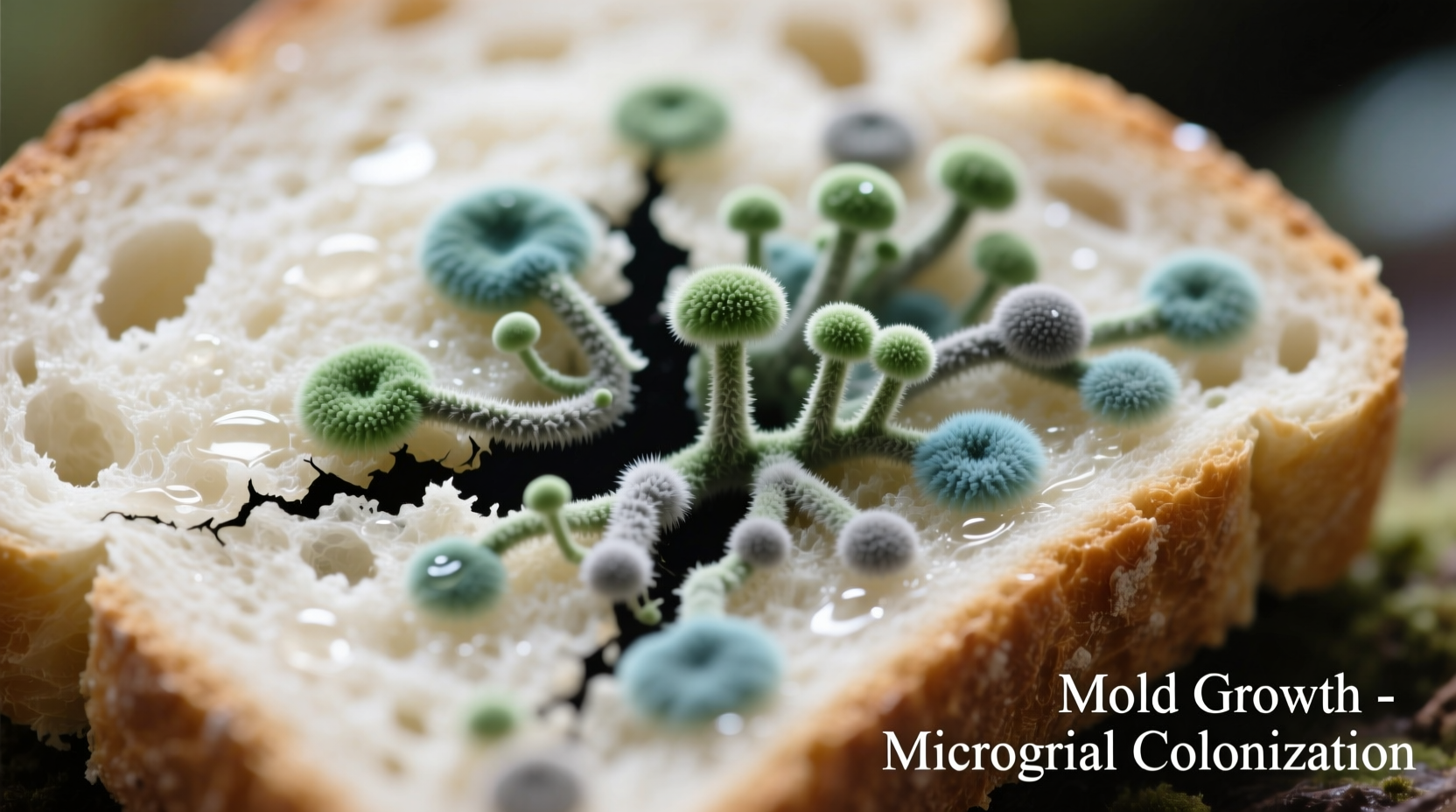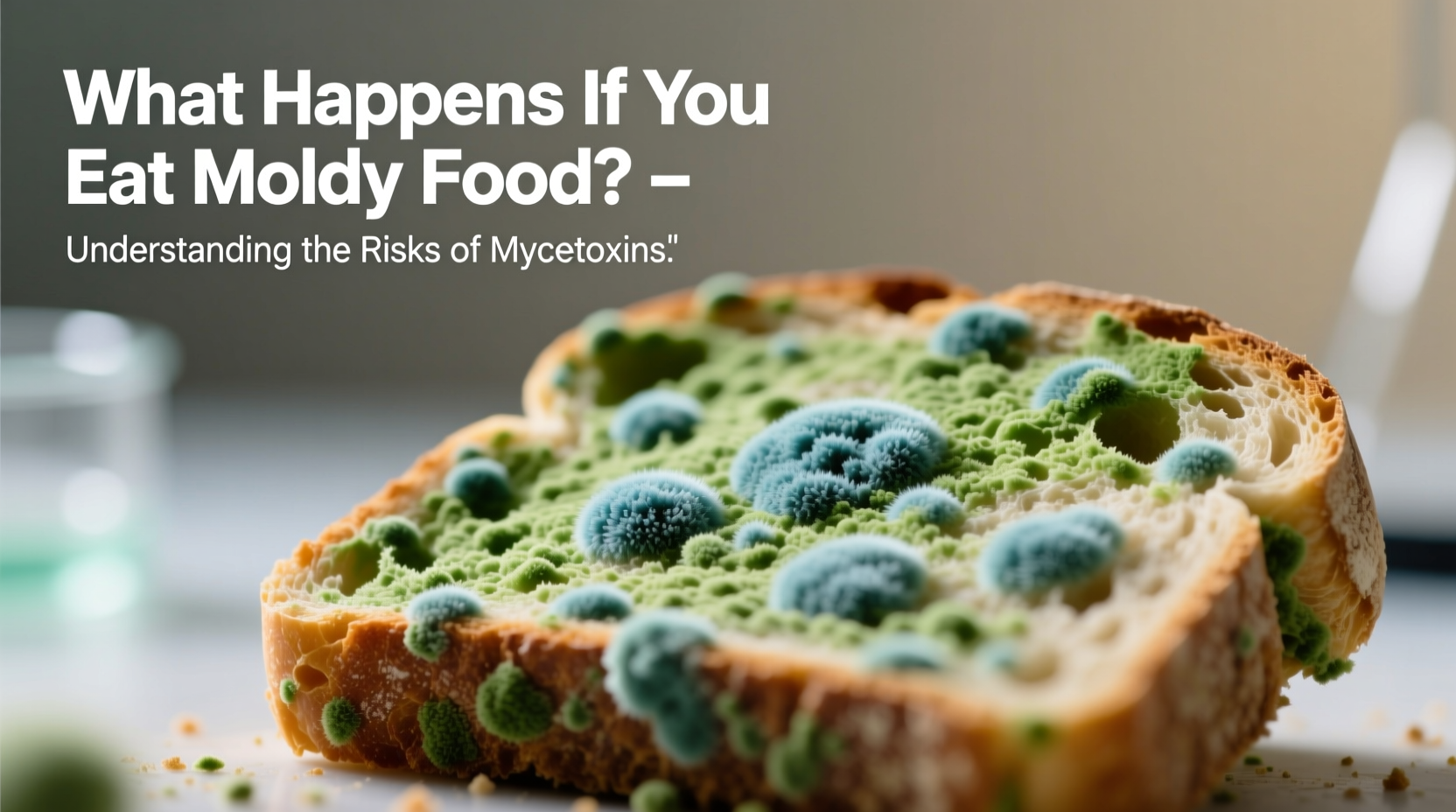Eating moldy food typically causes mild digestive upset like nausea or vomiting in healthy adults within 2-6 hours. While most common household molds aren't immediately dangerous, certain molds produce mycotoxins that can cause severe illness, especially in children, elderly, or immunocompromised individuals. Discard heavily moldy foods immediately and seek medical attention for persistent symptoms.
What You Need to Know About Moldy Food Risks
If you've accidentally eaten moldy food, you're probably wondering: "Is this dangerous? Should I go to the hospital?" As a chef who's handled food safety in professional kitchens for over 15 years, I'll give you clear, science-backed answers. You'll learn exactly what happens when you consume mold, recognize warning signs that require medical help, and discover which moldy foods you can safely salvage.
Immediate Effects of Eating Moldy Food
Most people experience mild symptoms within hours of consuming mold-contaminated food. Your body treats mold as a foreign invader, triggering natural defense mechanisms. Here's what typically occurs:
| Symptom | Onset Time | Duration | Severity Level |
|---|---|---|---|
| Nausea or vomiting | 2-6 hours | 4-12 hours | Mild to moderate |
| Diarrhea | 4-8 hours | 12-24 hours | Moderate |
| Abdominal cramps | 3-7 hours | 6-18 hours | Mild |
| Allergic reactions | Immediate-2 hours | Varies | Severe (rare) |
This timeline comes from CDC foodborne illness tracking data showing most mold-related symptoms appear within this window. Unlike bacteria like salmonella, mold toxins don't multiply in your body—they cause irritation as they pass through your system.

When Mold Becomes Dangerous: Critical Warning Signs
While most mold exposures resolve quickly, certain situations require immediate medical attention. The FDA identifies these high-risk scenarios:
- Consuming moldy hard cheeses or cured meats – These can harbor mycotoxins like aflatoxin that damage liver tissue
- Eating moldy nuts or grains – Particularly dangerous due to potential aflatoxin contamination (source: FDA Food Safety Guidelines)
- Experiencing symptoms beyond 24 hours – Indicates possible mycotoxin absorption
Immunocompromised individuals face greater risks. A 2023 Johns Hopkins study found mold-related hospitalizations increased 37% among cancer patients who consumed moldy foods. If you have a weakened immune system, contact your doctor immediately after accidental consumption.
Which Moldy Foods Can You Actually Salvage?
Contrary to popular belief, not all moldy foods must be discarded. The USDA provides clear guidelines based on food density:
- Save these: Hard cheeses, firm fruits/vegetables (like carrots), hard salami – cut 1 inch around and below mold spots
- Discard these immediately: Soft cheeses, bread, yogurt, lunch meats, jams – mold threads penetrate deeper than visible
This distinction matters because dense foods prevent mold from spreading internally. The USDA Food Safety Inspection Service confirms mold in porous foods like bread can have invisible roots throughout the item.
Preventing Mold Accidents in Your Kitchen
Professional kitchens follow these evidence-based practices to minimize mold risks:
- Control humidity: Keep pantry below 50% humidity using hygrometers (mold thrives above 60%)
- Store properly: Use airtight containers for grains, nuts, and dried goods
- Check expiration dates: Discard opened packages of nuts or grains after 3 months
- Inspect before eating: Hold food against light to spot early mold growth
Remember that freezing stops mold growth but doesn't kill spores. Thawed foods with previous mold exposure remain unsafe. The Academy of Nutrition and Dietetics reports proper storage reduces mold incidents by 68% in household kitchens.
What to Do Right Now If You Ate Moldy Food
Follow this immediate action plan:
- Don't panic – Most cases resolve without intervention
- Drink clear fluids – Water or broth to flush your system
- Avoid anti-diarrheals – Let your body eliminate toxins naturally
- Monitor symptoms – Note onset time and severity
- Call poison control (1-800-222-1222) if severe symptoms develop
Keep the food packaging if possible—this helps medical professionals identify potential mycotoxins. Never induce vomiting unless instructed by a healthcare provider.











 浙公网安备
33010002000092号
浙公网安备
33010002000092号 浙B2-20120091-4
浙B2-20120091-4